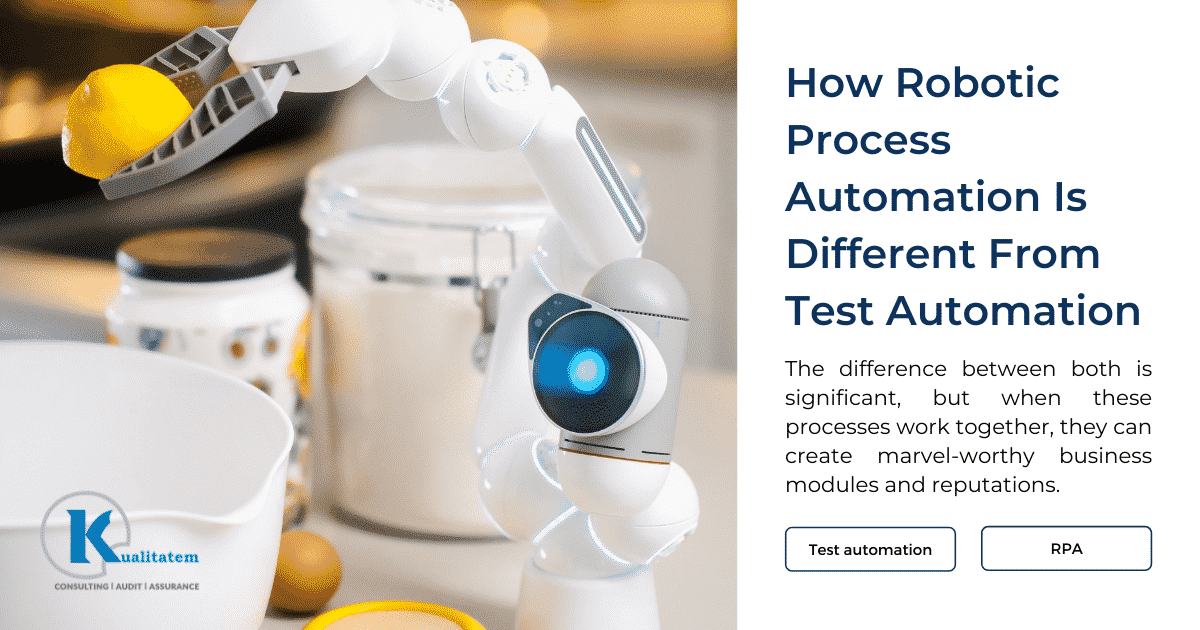How Robotic Process Automation Is Different From Test Automation

- September 21, 2021
- maira
When RPA and test automation began finding their way into the industry, they began transforming the nature of work itself.
Generally, there are plenty of apparent reasons to call Robotic Process Automation (RPA) and Test Automation two similar processes, including fast releases, cost and time efficiency, correctness, QA, reduced human intervention, and, of course, automation.
But RPA is a step ahead approach that provides better assistance to test automation in many ways. Where testing with automation performs quality assurance on a product with practices like functional testing, responsive testing, performance testing etc., RPA delivers services to other departments like HR, EPR, BPO, data entry, automatic invoicing, information transfer, among a range of other things, and is therefore more business-centric.
Both these services don’t integrate similar tools to perform automation. The difference is big, but when both processes work together, they can create marvel-worthy business modules and reputations.
But first, we need to see the difference between the two:
Robotic Process Automation (RPA)
RPA is a software-based technique, it is conducted in processes like accounting, finance, management, data entry, front and back office operations, transactions, invoicing, evaluations, and calculations. Any application or development models used by a particular enterprise can be effectively functioned by the RPA framework.
To conduct RPA, software robots or virtual assistants are created that perform the above-mentioned activities.
These virtual bots are created by tools like
- Blue prism
- UI Automation tool
- Automation Anywhere
- OpenSpan Tool
- UIpath
- Citrix
- C#
- DirectX9
- NUnit
- .NET 4.0
- Ace (IDE for V+)
- Robot Emulator
- HTML
- Java
While the most compatible systems for RPA involve:
- Mainframe Terminals
- SAP
- Oracle
- Blackline
Does RPA require any specific knowledge?
Robotic Process Automation does not require any tough programming knowledge and is autonomous and input-driven.
What are its benefits?
The innovative technology is highly productive for industrial sector which often demands extensive work and long hours. Repetitive test cycles and logical tasks can be conducted via RPA as it proficiently reduces human efforts by doing half of their mundane tasks, while improving increases the chances of correctness and accuracy.
Test Automation
How is test automation different from RPA?
The test automation process is greatly different from RPA in many terms. In short, software testing executed with the help of a testing tool is called test automation or automated testing. It incorporates testing tools. Listed below are some of the most commonly used test automation tools:
- Selenium
- HP – UFT/QTP
- TestComplete
- IBM – RFT
- HP – LoadRunner
- Ranorex,
- TestWhiz
- Appium
- SoapUI
- Watir
- HP – ALM/QC
- Jira
- Tosca Testsuite
- Bugzilla
Does test automation require any specific knowledge?
RPA entails no knowledge and runs entirely on the input being provided. Test automation, on the other hand, is a specific field that needs intensive testing information, with a perspective that encompasses ongoing software testing trends.
What are its benefits?
Businesses require test automation to make their software or application error-free since customer satisfaction is the basic goal of software testing. It confirms whether a product is performing according to set expectations, or whether it needs improvements. QA is the key element in test automation.
Banking, financial, government, health, IT, and many other sectors require the services of software testing as it ensures their development and reputation among users and audiences.
Is RPA going to affect jobs?
This is a central, and valid, concern.
If we talk about jobs, then yes, people are going to face a tremendously competitive environment in the future with RPA. But if we think of it in terms of RPA facilitating job transformation rather than replacement, think of all the jobs being created as RPA takes over more tedious tasks. Testers performing test automation needn’t worry, though, because they’ll continue holding their exclusive place as QA testers.
It’s expected that RPA and test automation will both rise as powerful technologies to enhance the application of quality assurance. There are competitive advantages affiliated with both, and they offer industries the chance to improve their scalability models with less investment.











